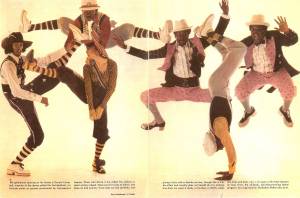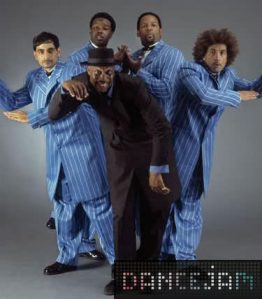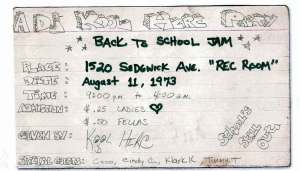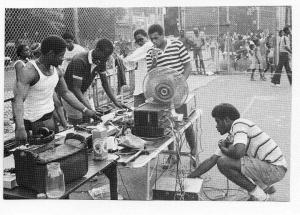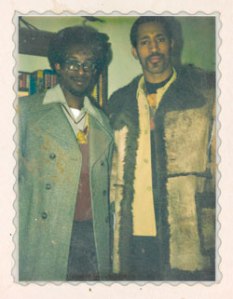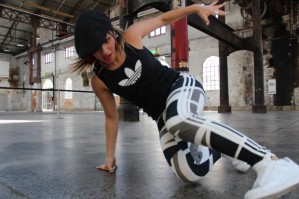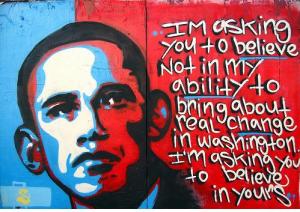So last week while watching the ever-addictive So You Think You Can Dance, a hip hop dancer auditioning used to term ‘pop-locking,’ to which I tweeted and said that there was no such thing as ‘pop-locking.’ A lot of people asked why and I clarified for them, but I figured I may as well use this opportunity to break down the three original styles of hip hop dance a little further.
I have already written a very brief rundown of the history of hip hop, introducing the bare minimum of the culture. There is so much more to it than I included, so if you feel the need to further educate yourself, PLEASE DO. It is our responsibility as teachers to educate these kids, not just show them the cool stuff. So go read that, then come back and learn more about breaking, popping and locking!
Breaking was the first of the original hip hop styles to be created. At first, it was a lot simpler than what it was now. The term breaking comes from the break in the music that deejays would loop and elongate so people could get down on the beat. The style started out as rocking. The movement was done standing, and has now grown into a vocabulary and style all it’s own. The top rock, salsa rock, indian step, the apache, and many others make up the basis of rocking. It is all about the style and finesse in which you personally give it. It is just as much a crowd pleaser as the big, showy power moves and freezes that were later introduced to the style. It is all about musicality. One of my favorite rockers to watch is Bboy Ynot from The Legendary Rock Steady Crew.
The first people to take the movement to the ground were The Nigga Twins. They are recognized as breaking pioneers with their new, fresh vocabulary of movement to add the to style. From there, those in the newly born culture, took inspiration from what they saw and gave it their own spin. From then, the breaking footwork vocabulary was born. Some of the well known steps from the genre are the 6 step, switches, Russians, Russian sidesteps or CCs, half sweeps, full sweeps and so many others. From the birth of footwork, breaking got bigger and flashier. Freezes were introduced and it eventually grew to the power moves like head spins, flares, windmills, back spins, etc.
The next style to emerge in the hip hop community was created by a man named Don Campbell and is called locking. It is one of the two funk styles – the other being popping. The music is a little different than what you would break or rock to, but not completely. It’s just a little funkier, more horns and other instruments. This dance form is a lot of fun to watch and perform. It is a very relaxed and animated movement. Everything is very exaggerated and it is often interactive with either a partner, hat or suspenders, and the crowd. The style itself was created by accident. Shortly after the rise of locking, Campbellock created a group called The Lockers – boasting a list of very well-respected dancers including Toni Basil and Shabba-Doo.
The vocabulary of locking consists of wrist rolls, Uncle Sam points, Atlas pose, and of course the lock, in addition to many other moves. When done in succession, there are moments of stopping, or locking, and that is how the style got it’s name. When I teach locking to those with zero to very little exposure to the style, I refer to Goofy, the Disney character. Everything he does is very animated and he has a natural bounce to his walk.
Don ‘Campbellock’ Campbell
Judges Showcase performance at Funkology in 2011
Just like the other styles of hip hop, it has since crossed the world and gained notoriety. Lockers have a very specific style of dress as well. You can normally find them in apple hats, stripes, vests, suspenders, and the like.
Hilty and Bosch Showcase at Bottle of The Year 2008
The final original style of hip hop dance is popping. This came to be in the early 80s and the movement is heavily influenced by the more electronic or almost robotic sound of the music of the time. Popping is achieved by quickly contracting and releasing, or flexing, of the muscles. That action is called a pop or a hit.
Within this style, there is also the movement qualities of ticking – the quick, flex and release in continuous movement; boogaloo – incorporates knee rolls and a more fluid movement; waving – movement that gives the appearance of a wave moving through the body; tutting – a sharp and precise movement that is inspired by the Egyptian hieroglyphics and King Tut with flat, 90-degree angles done with arms, hands and even fingers.
One of my favorite poppers is a founding father of the Hip Hop culture and someone I highly respect. Jorge ‘Popmaster Fabel’ Pabon is a member of The Rock Steady Crew and The Mighty Zulu Nation. I always love watching the ones that started it all still being very active in the community and art form.
Jorge ‘Popmaster Fabel’ Pabon Judges Showcase
Max Party – Taiwan 2014
The fashion style of a popper is a very dapper one, consisting of slacks, dress shoes, button up tailored shirts, and even ties and suit jackets from time to time.
So as you can see, while all these styles are under the umbrella of hip hop, they each are their own distinct, subculture with their own music, style and vocabulary of movement. While most hip hop dancers do cross train, the styles are never mixed – hence no such thing as pop-locking.
XO,
#DanceTchrProbs


